|
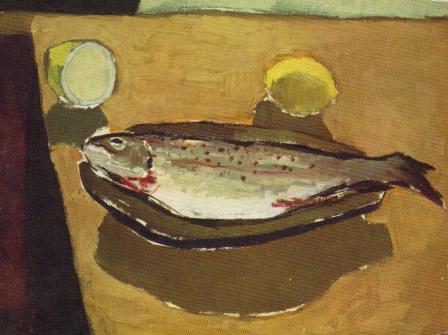
Trout, oil on board c1926 (ae)
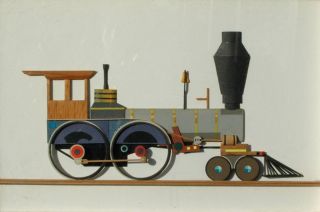
Steam Locomotive, wood, card, film, metal 1980s
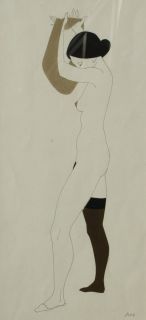
Black stocking, line with film (1980s)
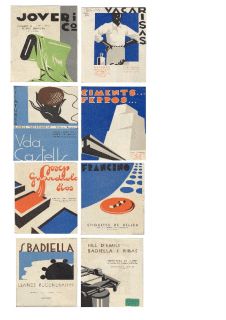
Some of Armengol's designs for Department stores c1924
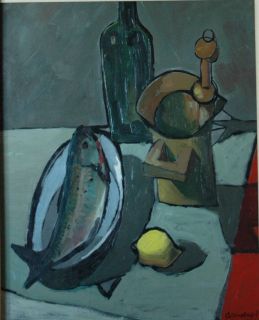
Still life with trout. Private collection
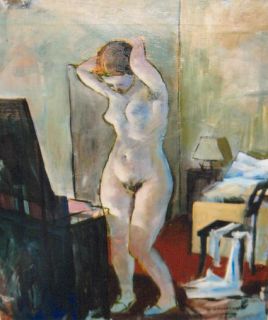
Madaleine, Oil on Canvas, 1950's, Private Collection
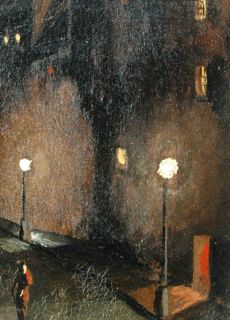
Paris Street, oil on board 1920s. Private collection
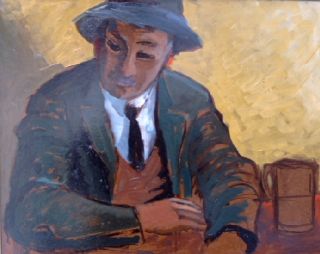
Man with hat. Oil on board. Private collection

Experimental Russian icon. Oil on board. Private collection
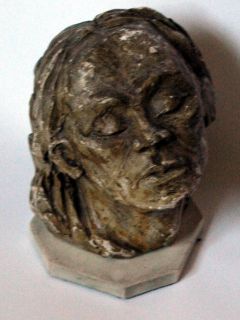
The Legacy of War, Plaster 1848 (ae)
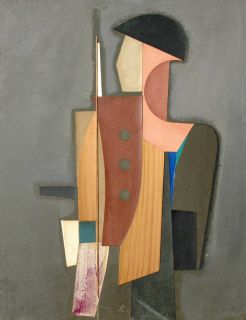
Soldier, wood collage on board 1951 (ae)
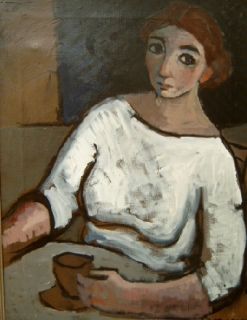
Cafe con Leche, oil on canvas 1946
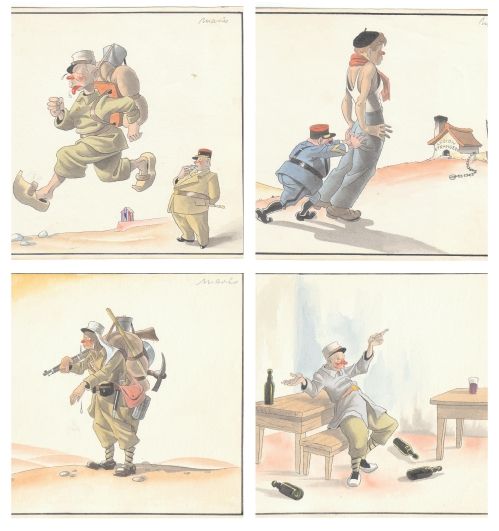
Life in the Legion. Watercolour 1940s
|
1909 Mariano Armengol Torrella
Mario Armengol was born on 17th December 1909 in San Juan de las Abadesas, a small, attractive town in the shadow of the Pyrenees in Catalonia, Spain.
Armengol was the second of six children, and the elder of the two sons of Benito Armengol, a wealthy textiles manufacturer, and his wife, Francisca Torrellas Casanobas.
Armengol grew up a bright, highly intelligent and affectionate boy with flaming red hair and a deep love of nature and the great outdoors.
He and his siblings learned to swim during their regular family visits to the nearby Barcelona coast. They took turns to learn breast-stroke alongside their very large pet dog, occasionally holding on to its tail for safety.
The dog seemed to enjoy its role as ‘swimming coach’ under the watchful eye of the family Governess.
The young Armengol learned to fish and patiently
made his own flies to catch Trout and Salmon.
Angling became a life-long hobby and relaxation.
He was a regular hill-walker and an accomplished mountaineer.
These early skills contributed to his survival in later life.
However, his greatest love was painting and drawing and his extraordinary talent emerged from the age of seven. His mother encouraged him from the outset.
He was always an intellectually inquisitive boy. A wealthy aunt of Armengol’s owned one of the first cars to be seen in the region. As well as learning at an alarmingly young age to ‘drive’ the noisy auto, he was equally fascinated by the motor’s mechanism; he enjoyed hanging precariously under the bonnet to watch the engine parts in action.
This curiosity to find out ‘how things worked’ resulted in a number of death-defying accidents during his childhood.
c.1920 Armengol family moves to Terrassa
Benito Armengol moved his family and his lively 11-year old son to a larger, elegant house having amassed a considerable fortune during the Great War (1914-1918) producing cloth for the Allied armies.
His factory was based in Terrassa, a major centre for the textiles industry.
Although his family now lived in the town, this did not seem to deter Benito Armengol from conducting many open affairs with local women, much to his wife’s distress.
The young Mario frequently found his mother in tears; he became her young confidante and tried to console her. The father-son relationship deteriorated as a result.
In the meantime, Armengol Senior was seriously considering less-than-rational investments, including buying a theatre to please one of his many mistresses, an actress.
Armengol Senior travelled extensively on business, England included, where he visited the wool and cotton mills of Lancashire and Yorkshire.
Young Armengol’s curiosity to ‘find out’ caused two major accidents which he was lucky to survive.
His hair caught fire whilst he was conducting 'experiments' involving petrol and candles. The rapid action of an uncle who covered the boys head with a heavy tablecloth saved him, but Armengol's lower face and neck were scarred for life.
Early flight also fascinated the young boy. An incautious launch from a high banister landed him head-first on the marble hallway tiles below. Although severely concussed and shocked, he was unscathed.
1912 Armengol, aged 12 wins Art Competition
The pre-teen young artist was gaining a reputation in Terrassa and was delighted to win a competition to illustrate a story book.
His vibrant pictorial style was well received, and enthused the local artistic and business communities.
1926 Armengol,aged 15 commissioned by local businesses
Armengol, the industrialist's son, was attracting the attention of commercial enterprises in Terrassa. He was commissioned by department stores and other outlets to produce designs for posters and advertisements, for which he produced lino-cuts using strong, vibrant colour and line work.
Armengol Senior expected his elder son to follow him into the textiles business, much to Mario's dismay.
After a brief period studying art in Terrassa, he was sent by his father - who refused to listen to the young artist's protestations - to a technical college in Madrid to prepare for a future in Business and Textiles.
The young Armengol was not to be thwarted. He used the money provided for the technical college fees to enrol on a Fine Art course. His mother and a sympathetic family friend continued to fund this secret enterprise. Inevitably his father discovered the plot and finally gave up on his ambitions for Mario to become a businessman.
c1928 Armengol moves to Paris
1920s Paris and its dynamic artistic community drew
Armengol like a magnet. He enrolled at an arts
academy to continue his Fine Art studies.
There was talk of having to sleep under the bridges of the Seinne when the money ran out but he thrived in the bohemian atmosphere, made friends with fellow artists, political radicals and free-thinking women, one of whom, Madeleine, he lived with for a while.
Armengol began to sell paintings, to build a reputation as an outstanding colourist, and had two successful exhibitions alongside Picasso and Utrillo. These received favourable critical notices in La Gazette des Beaux Arts and other papers.
He became very politicised and his eyes turned to Spain which was in the middle of one of its most turbulent historical periods. The desperate poverty of the majority of the population, and the power of the landed gentry was creating insurrection, and the whole world was watching.
c1930 Armengol returns to Spain
New pressure for democratic elections was building in Spain and the Right Wing government's power base was beginning to crumble. The fledgling democratic movement was based in Barcelona, and pledged to change the fortunes of the impoverished Spaniards.
Armengol returned to Catalonia, via Terrassa and began to produce promotional material for the Republican movement, drawing political cartoons and caricatures to promote the new politics.
He continued to work for the new Republican government after the fall of dictator Primo de Rivera (1930) and the abdication of King Alfonso X111 (1931).
c1931 marries Isobel Obradors
Paris and the 'alternative' artistic lifestyle was a long way from the deeply Catholic Spanish society which Mario had returned to. He had no option but to conform, and soon courted and married a handsome young woman, Isobel Obradors.
He continued to work on publicity and promotional work for the government.
1936 Spanish Civil War breaks out
At the outbreak of the Civil War, Armengol's loyalties remained with the elected Republican Government. Life became unsettled and precarious for the young couple, and Armengol's family.
1938 Franco's Fascists take control
Shortly before General Francisco Franco came to power Armengol's parents and his siblings fled to Mexico, where he father re-established an industrial base. His wife stayed despite the volcanic political situation.
The young Armengol was in danger under the new Fascist regime; he was on a list of 'undesirables' and being sought out by the Rightists.
Using his knowledge of the mountains and climbing skills, he decided to leave Catalonia and headed for the hills, crossed the Pyrenees into France, was arrested by the police and, along with many other Spanish refugees, was interned in a transit camp. It is a point of conjecture whether he knew that the wife he left behind was pregnant.
The French authorities were being inundated by Spaniards fleeing the Fascists. Armengol was given two choices; face forcible repatriation which would result in almost certain death, or join the French Foreign Legion. He joined the Legion.
On 23rd November Armengol enlisted with the 2nd Battalion of 13th Demi-Brigade and, following the custom of the Legion, acquired an official pseudonym, and becomes 'Mario Hubert'
The young recruit was posted to the Legion's headquarters at Sidi-Bel-Abbes, Algeria on 27th November 1938.
His hair was shaved, he pressed his uniform in between two straw mattresses, he wore wooden soled boots, and his pale redhead skin was bitten ferociously by insects, but tried his best to integrate.
A pacifist in every gene, Armengol's poor soldiering skills soon became painfully obvious. Luckily, the Brigade Captain recognised his graphic talents, took him away from rock-breaking and marching drills, and set him to work as a cartographer on topographical surveys.
Armengol began to use his cartography pens to caricature the legionnaire's life.
1939 birth of Benito Armengol Obradores
Isabel, Armengol's wife, gave birth to a son, Benet. At this stage both she and his family assumed that he was probably dead, but did instigate searches for news of him through the Mexican Embassy networks in Spain, France and England.
1940 and World War 11
Armengol and the 13th Demi-Brigade was posted to Scotland by the Foreign Legion headquarters in Marseilles, France. Here, the Brigade joined Polish and British troops to form the Allied Expeditionary Force, and was sent to help to liberate Norway as part of the ill-fated Narvik campaign.
These experiences inspired a series of watercolour illustrations titled 'From Vik to Narvik', Vik being a village close to Terrassa, the town where Armengol grew up.
After Dunkirk, Armengol was evacuated to France and fought a rearguard action before being evacuated from Brest in North-West France, then to England and Plymouth Sound, in the South-West. He was then moved onward to the Port of Liverpool in the North-West, where he was interrogated by political and military intelligence officers.
On 9th July Armengol was demobilised from the French Army.
1941 Life Begins in Britain
On 20th February the refugee Armengol, one of thousands of displaced people from across Europe, was granted official leave to stay in Britain. He and two fellow refugees, Juan and Agustyn, an Armenian Jewish jewellery designer, were befriended by Francisco Madariaga, a restaurateur and leading member Liverpool's long-established Spanish Basque community.
Whilst visiting an art shop in Liverpool, Armengol, in halting English, struck up a conversation with the owner, who gave him a set of artist's materials which had been ordered, paid for but never collected by one of his customers. Armengol could work again.
In return for his Basque hospitality with the Madariaga family, Armengol painted panels of decorative sea food platters and paella dishes to decorate the restaurant's bar and designed advertisements and menu cards for the 'Continental Restaurant' where he met Rolindez, the striking elder daughter of Francisco and Anastasia Madariaga. Their relationship was to last for 60 years.
Rolindez and Armengol were instantly attracted to each other, but a penniless, married refugee artist was certainly not part of the family plan for their handsome daughter. One of the many South American Diplomats who frequented the restaurant were more desirable options. Senora Madariaga ensured that her daughter was permanently chaperoned whenever 'the refugees' were about.
For a New Year card, Armengol caricatured Rolindez hiding under the stairs from the German Bombers that frequently attacked Liverpool.
Armengol went to London on the recommendation of the International Commission for War Refugees, to work as an artist for the Ministry of Information. He found rooms in Hampstead, London and began working for the Latin American Section, then transferred to the European Art Department, led by Edwin Embleton. In frustration, Rolindez joined the Army and was posted to Chester, working on food technology for troop rations.
Armengol was close to mental collapse after being on three war fronts and then being subjected to the Liverpool bombings and the London Blitz. He was billeted to a tiny village in the middle of rural Nottinghamshire; Laneham, near Retford.
He lived in a farmhouse and then a pub in the village, producing an estimated 2,000 war cartoons, illustrations and public information graphic works for the British Government. These were sent weekly to London by post. He fished with the local children who thought he was a friendly spy because of his foreign accent and the beret he always wore. He befriended the villagers, helped on their farms, and painted several murals to brighten up their simple homes.
He also befriended a certain young women, and is still remembered (in 2006) vividly by the community as a 'folklore' figure.
His cartoons were reproduced throughout neutral, allied and occupied countries. He also contributed to the London-based Free French daily newspaper France(founded 26th August 1940) and monthly Message, and Revue internationale Belge from its first edition (November 1941). |